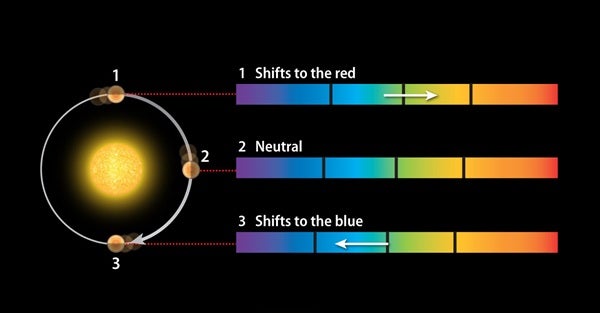
An orbiting planet tugs on its star, which induces a wobble in the star’s motion. The star’s spectral lines shift to the blue as the star approaches and to the red as it recedes.
Astronomy: Roen Kelly
Finding exo-Earths has the same potential as directly observing the universe’s expansion, and that’s why Dimitar Sasselov and his Harvard colleagues are determined to build their own version of the astrocomb.
Astronomers use spectrographs to watch for subtle wobbles in a star’s spectra as a planet orbits it. The planet pulls on its star, and as the planet orbits toward Earth, the star’s light wavelengths compress and become blueshifted. As the planet moves away from Earth, the star’s spectra is stretched, or redshifted.









